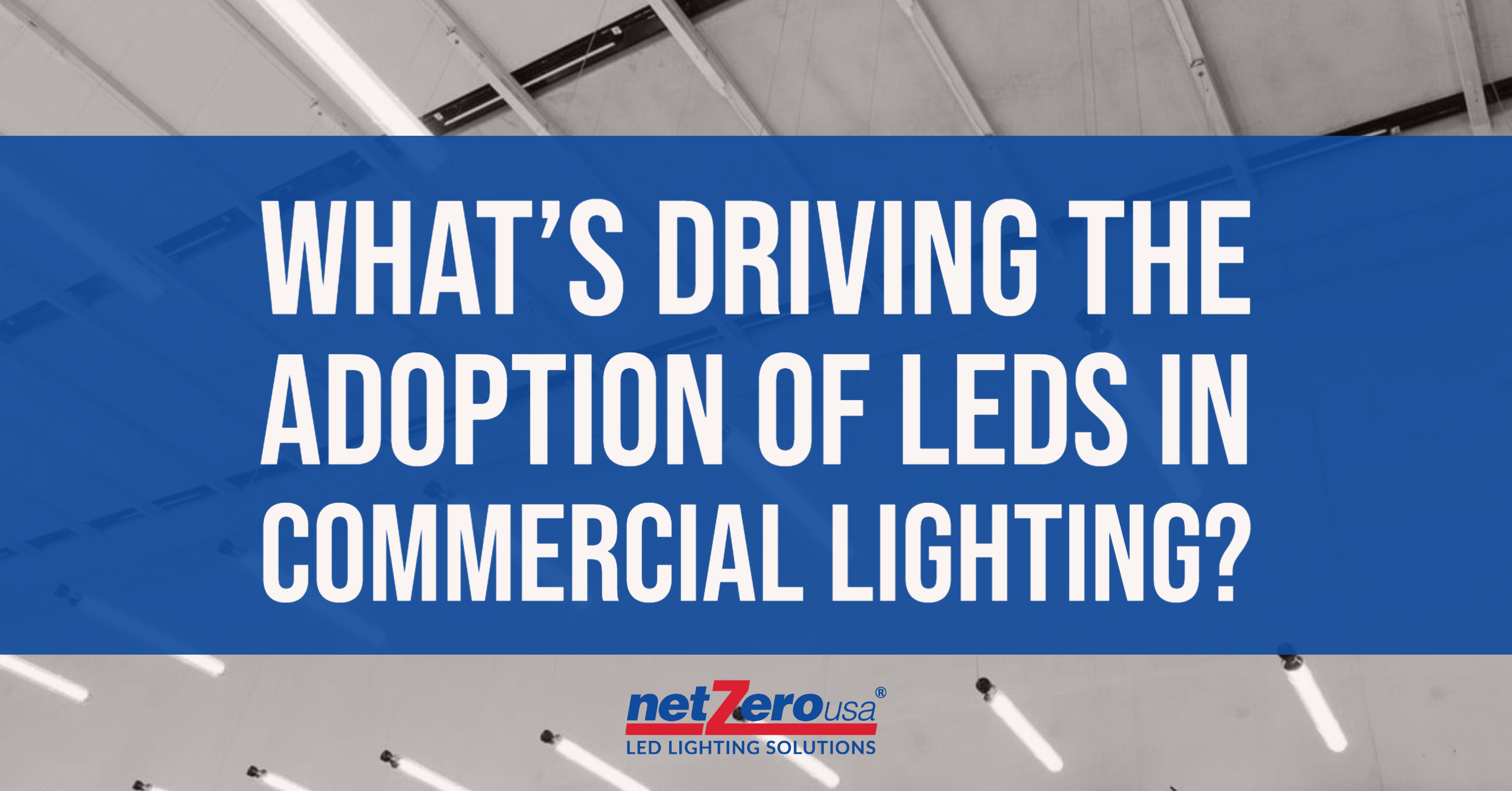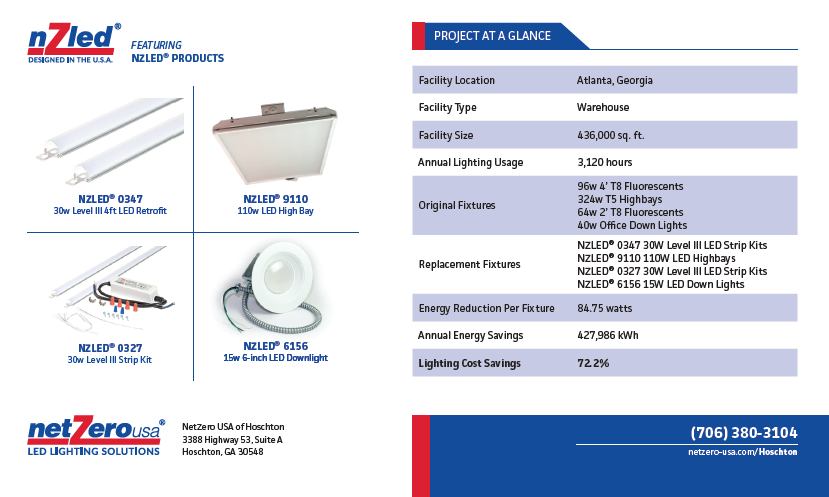
The biggest advantage of commercial LEDs lighting is that it's the lowest-energy-intensive (most efficient) way to generate light, and thus the most economical.
Using LEDs In Commercial Lighting Has Endless Applications!
Posted in General by Net Zero USA
A light-emitting diode (LED) is a simple component of an electrical circuit that creates light when current is placed across its terminals. The use of LED technology has skyrocketed in the past two to three decades, and its being used as a replacement to T12 & T8 fluorescent lighting in all sorts of commercial applications.
So, what’s driving the adoption of LEDs in commercial lighting? Below we’ll take a look, including an understanding of the history and advantages of LED.
What is an LED?
The LED is a special type of diode that emits light when current flows through it in one direction but does not light up when current flows through it the opposite way. Unlike other types of diodes, they are used not for circuit protection or signal rectification but rather primarily as indicators for what is happening in a circuit or simply for the light they create.
History of LED Lighting
The first commercially available LEDs were red; blue and yellow ones were developed in the 1970s. These first-generation LEDs were not very bright, extremely expensive, and only viable for use in high-end lab equipment.
Since then, LED technology has accelerated rapidly. We now have access to high-brightness, low-cost LEDs in an array of colors that include UV and infrared. We have RGB LEDs, which have all three primary colors of light (red, green and blue), as well as addressable LEDs with tiny integrated circuits inside to give us infinite color and brightness control. We are truly living in the golden age of LED technology.
Advantages of LEDs
The biggest advantage of LEDs in lighting is that they are the lowest-energy-intensive (most efficient) way to generate light.
A single-component LED draws about 20-30 milliamps of power, and LED light bulbs use about 10 times less power to generate the same amount of light as their incandescent equivalents. This makes them economical for home use and much better for battery-powered devices with a fixed power capacity.
Because LEDs use less power, they generate less heat. This makes them much more friendly and less dangerous in the working environment than incandescents or fluorescents.
LEDs are also long-lived components. A standard LED can have a useful lifespan of about 50,000 hours, which is more than 5.5 years of ‘round-the-clock use. For many applications, this means they are essentially immortal. It is very rare to replace a burned-out LED on a circuit board unless it is mistreated.
LED Lighting Is Truly Versatile
Component LEDs come in many different sizes. This means they can be used in the tiniest of electronics, all the way up to giant TV screens.
In commercial lighting applications, LED solutions exist across many form factors, from office lighting to overhead warehouse lighting, to exterior applications like wallpacks, flood lights and parking lot lighting.

Related Reading: LED Lighting Case Studies
About NetZero USA®
NetZero USA® is a nationwide, end-to-end provider of commercial LED lighting solutions. We design, manufacture, install, finance, warranty and service our products. NetZero USA® is the lighting industry’s first – and only – vertically integrated energy reduction company. From product design and manufacturing, to installation and service, and everything in between, we exercise full control over our products and services.